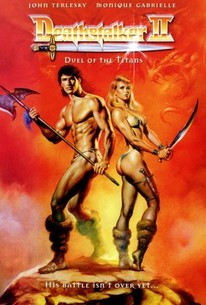 |
| Tolkien: Not just for medieval scholars, anymore. |
--Holly Ordway, Tolkien’s Modern Reading
J.R.R Tolkien has been described as harder to influence than a Bandersnatch, and commonly believed to be utterly uninterested in any literature written after the Canterbury Tales. As it turns out, these claims are largely untrue. Tolkien was indeed an ardent medievalist, but the “leaf mould” of his imagination was far deeper, and richer, and broader, than just an amalgamation of ancient works. Despite what many commonly believe, Tolkien also read and enjoyed modern literature, too.
The person to blame for this inaccurate characterization? The late Humphrey Carpenter, author of the only authorized biography of Tolkien and the only outsider (still!) ever permitted complete access to Tolkien’s complete letters.
Ordway’s book studies fiction that Tolkien would have considered “modern” (published 1850 to his present day) and that had some influence, glancing or readily apparent, on his main legendarium (The Hobbit, The Lord of the Rings, The Silmarillion). Ordway restricted her work only to those authors whom Tolkien definitely interacted with, as can be traced to notations or references in his public writings, letters, interviews, from reports from other people, or in his work in academia. Ordway’s work lists a total of 148 authors and more than 200 titles. These include the likes of a few authors that should be familiar to readers of this blog: Poul Anderson, Algernon Blackwood, Ray Bradbury, Edgar Rice Burroughs, James Branch Cabell, Lord Dunsany, E.R. Eddison, H. Rider Haggard, Robert E. Howard, Henry Kuttner, Andrew Lang, Fritz Leiber, C.S. Lewis, H.P. Lovecraft, George MacDonald, C.L. Moore, William Morris, Clark Ashton Smith, Robert Louis Stevenson, and T.H. White, among many others. Many of these seem to have had negligible influence (Tolkien read the likes of Howard and Smith for example in the L. Sprague de Camp collection Sword & Sorcery, and has little to say about it), but other authors made an impact, sometimes profound.
Ordway does a fine job tracing these influences and matching them up, thematically or stylistically, with passages from Tolkien’s texts. For example, from MacDonald’s Lilith he may have drawn inspiration for his themes of death and deathlessness (MacDonald was father to 11 children, but was predeceased by six of them, including his eldest child Lilia). Both MacDonald and Tolkien were “men much acquainted with grief.” Tolkien also credits MacDonald’s goblins as a direct inspiration for his own underground dwellers in The Hobbit. MacDonald looms large enough to get his own chapter, as does, unsurprisingly, William Morris, whose Goths from The House of the Wolfings are stamped all over the Rohirrim. Interestingly, Ordway makes a good case that Morris’ imperialistic, militarized Romans may have inspired Tolkien’s orcs.
Haggard might be a surprise to some: Tolkien read so voraciously of old HRH him that Ordway devoted a whole chapter to his influence (“Rider Haggard: Fresh Ore from Old Mines”). We know that the eponymous She of Haggard’s wildly popular novel was an influence on Galadriel, and that he loved King Solomon’s Mines, but Ordway also reveals that Tolkien read the likes of the lesser-known The Wanderer’s Necklace. As late as 1961 he was still reacting positively in interviews to the name of Haggard. Dunsany was like Tolkien a veteran and wrote the preface of Tales of Wonder while recovering from a war wound, just as Tolkien began writing of his legendarium while recovering from trench-fever. Ordway also includes some deep cuts, noting that Tolkien borrowed elements of a pitched wolf battle in the pines from S.R. Crockett’s The Black Douglas (1889) for Bilbo’s escape from the wargs in The Hobbit. The striking art from this book bears it out. Not all of Tolkien’s reading was fantastic: One of the books that apparently inspired him greatly was J.H. Shorthouse’s John Inglesant, widely read in Tolkien’s day though largely forgotten today.
There is much, much more to recommend from this book, including coverage of writers such as Matthew Arnold, Sinclair Lewis, even a handful of science-fiction authors like H.G. Wells (Tolkien read them, too). If you’re a Tolkien fan, seek it out and read it.

